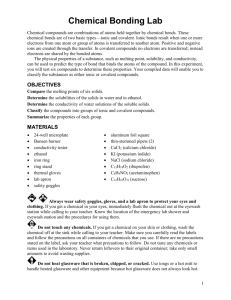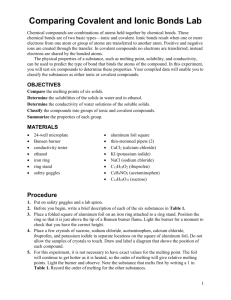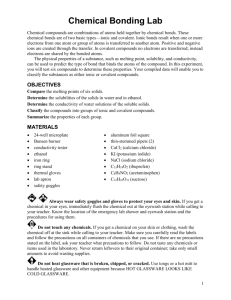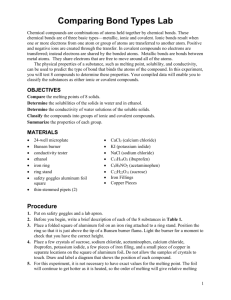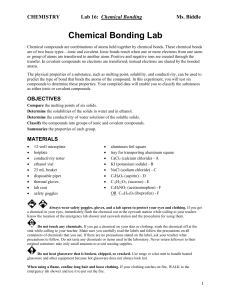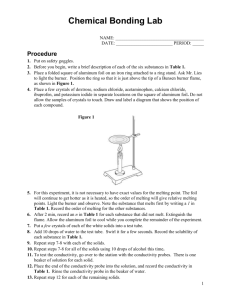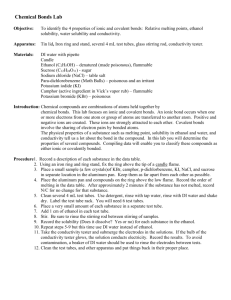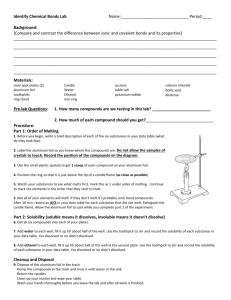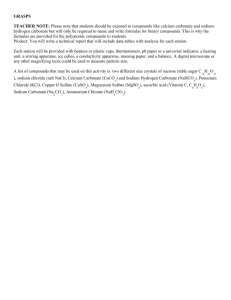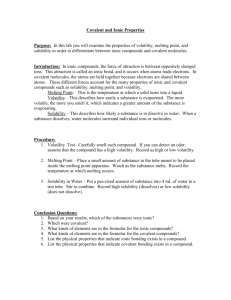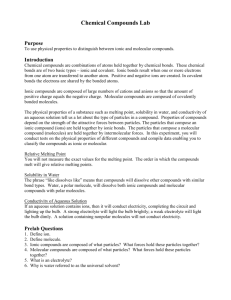Chemical Bonding Lab
advertisement
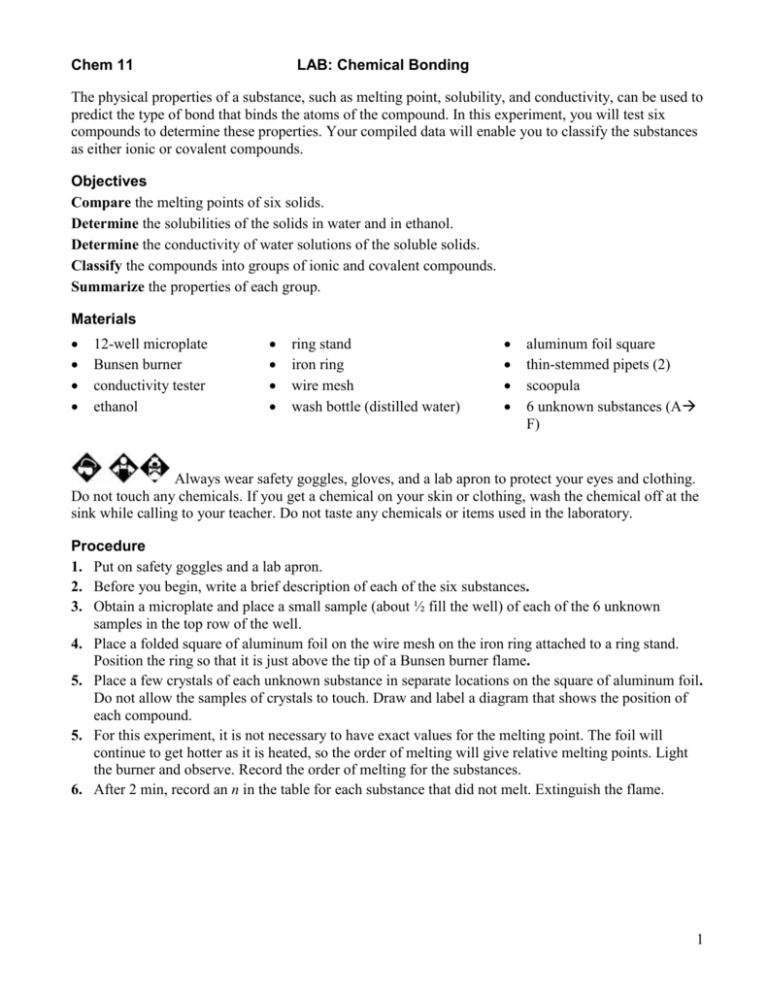
Chem 11 LAB: Chemical Bonding The physical properties of a substance, such as melting point, solubility, and conductivity, can be used to predict the type of bond that binds the atoms of the compound. In this experiment, you will test six compounds to determine these properties. Your compiled data will enable you to classify the substances as either ionic or covalent compounds. Objectives Compare the melting points of six solids. Determine the solubilities of the solids in water and in ethanol. Determine the conductivity of water solutions of the soluble solids. Classify the compounds into groups of ionic and covalent compounds. Summarize the properties of each group. Materials 12-well microplate Bunsen burner conductivity tester ethanol ring stand iron ring wire mesh wash bottle (distilled water) aluminum foil square thin-stemmed pipets (2) scoopula 6 unknown substances (A F) Always wear safety goggles, gloves, and a lab apron to protect your eyes and clothing. Do not touch any chemicals. If you get a chemical on your skin or clothing, wash the chemical off at the sink while calling to your teacher. Do not taste any chemicals or items used in the laboratory. Procedure 1. Put on safety goggles and a lab apron. 2. Before you begin, write a brief description of each of the six substances. 3. Obtain a microplate and place a small sample (about ½ fill the well) of each of the 6 unknown samples in the top row of the well. 4. Place a folded square of aluminum foil on the wire mesh on the iron ring attached to a ring stand. Position the ring so that it is just above the tip of a Bunsen burner flame. 5. Place a few crystals of each unknown substance in separate locations on the square of aluminum foil. Do not allow the samples of crystals to touch. Draw and label a diagram that shows the position of each compound. 5. For this experiment, it is not necessary to have exact values for the melting point. The foil will continue to get hotter as it is heated, so the order of melting will give relative melting points. Light the burner and observe. Record the order of melting for the substances. 6. After 2 min, record an n in the table for each substance that did not melt. Extinguish the flame. 1 7. Put a few crystals of each of the white solids in the second row of your microplate. Repeat with the third row, keeping the same order. 8. Add 10 drops of water to each well in the top row. Do not stir. Record the solubility of each substance. After 2 min, record an n for each substance that did not dissolve. 9. Add 10 drops of ethanol to each well in the second row of the microplate. Do not stir. Record the solubility of each substance. After 2 min, record an n in Table 1 for each substance that did not dissolve. 10. Test the conductivity of each water solution in the second row by dipping both electrodes into each well of the microplate. Be sure to rinse the electrodes with distilled water and dry them with a paper towel after each test. If the bulb of the conductivity apparatus lights up, the solution conducts electric current. Record your results. 11. Clean the microplate by rinsing it with lots of running water down the drain. If any wells are difficult to clean, use a scrub brush. Wash your hands thoroughly before you leave the lab and after all work is finished. Observations: CHARACTERISTICS OF COMPOUNDS Compound Description Melting point Solubility in H2O Solubility in ethanol Conductivity A B C D E F Discussion: 1. Group the substances into two groups according to their properties. 2. List the properties of each group. Conclusion: Use your textbook and your experimental data to determine which of the groups consists of ionic compounds and which consists of covalent compounds. Write a statement to summarize the properties of ionic compounds and another statement to summarize the properties of covalent compounds. 2
